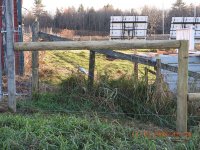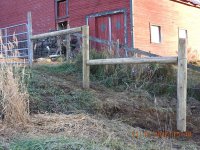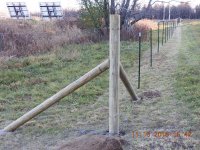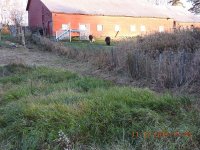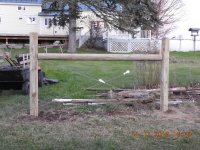- Thread starter
- #41
Bruce
Herd Master
OOPS! I meant 5' OUT of the ground, 3' in  . I can't imagine I could dig a hole 5' deep even if there were no rocks and the digging was easy. I'm having enough trouble getting down to 3' with most of them.
. I can't imagine I could dig a hole 5' deep even if there were no rocks and the digging was easy. I'm having enough trouble getting down to 3' with most of them.
I have plenty of 6 1/2' posts, that is what most of the decent diameter ones that I've removed are. They aren't treated though, maybe not such a good idea to use them. I do have some treated "4x4" landscape timbers that the prior owner used as posts (those on the gate are 2 of them. The one on the hinge side came complete with concrete. Kind of a PITA getting it into the poly dump cart and over to where I needed it. The excavator pulled it out when the solar panels were put in so the cement truck could get to the site.
Yep, I know I need to X the wires for support in both directions when I have both a gate and fence.
Can I really put wire fence under tension on that steep a slope? Seems like it would just pop the T-posts straight up out of the ground where the "steep" shifts to "gradual".
"any post more than a few inches above the top wire is just holding up air"
Or hot wire
I have plenty of 6 1/2' posts, that is what most of the decent diameter ones that I've removed are. They aren't treated though, maybe not such a good idea to use them. I do have some treated "4x4" landscape timbers that the prior owner used as posts (those on the gate are 2 of them. The one on the hinge side came complete with concrete. Kind of a PITA getting it into the poly dump cart and over to where I needed it. The excavator pulled it out when the solar panels were put in so the cement truck could get to the site.
Yep, I know I need to X the wires for support in both directions when I have both a gate and fence.
Can I really put wire fence under tension on that steep a slope? Seems like it would just pop the T-posts straight up out of the ground where the "steep" shifts to "gradual".
"any post more than a few inches above the top wire is just holding up air"
Or hot wire



